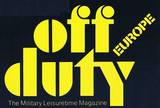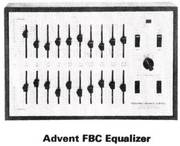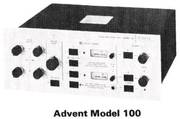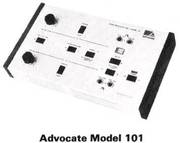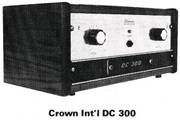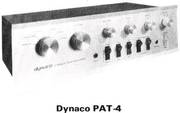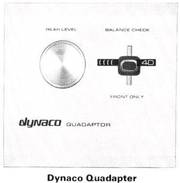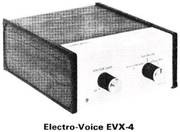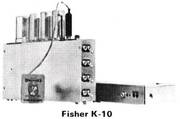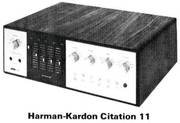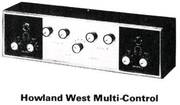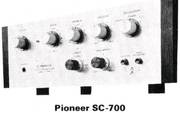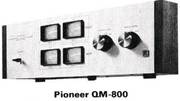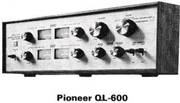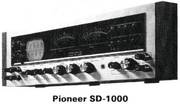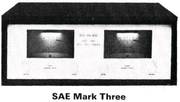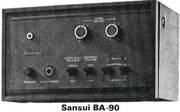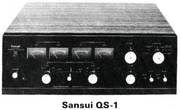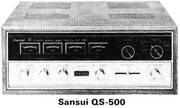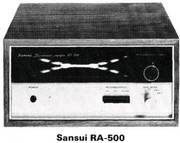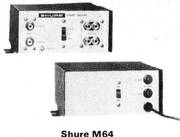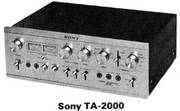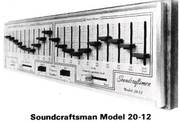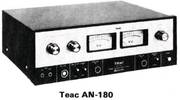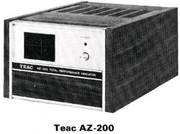"off duty" 1970 - 1997 - eine Freizeit-Zeitung für's US-Militär
Die in diesem amerikanischen (Freizeit-) Shopping-Magazin angepriesenen Hifi- und Video-Produkte waren auschließlich amerikanischen und kanadischen Militärangehörigen zugänglich - also zu kaufen - und vor allem zu ganz ungewöhnlich (verblüffend) niedrigen US $ Military-Preisen. Zu der einführenden "off duty" Seite geht es hier lang. - Um 1970 begann der weltweite Hifi-Boom bis zum 1. Crash 1978 und dann wieder zum 2.Crash um 1990. Über die 20 Jahre nach 2001 lesen Sie mehr in den Kolumnen auf diesen japanischen Seiten.
.
Hifi-"Spezialgeräte" aus dem Dezember 1971 und Januar 1972
Da die off-duty Ausgaben von 1970 und 1971 nicht mehr existieren, weiß ich nicht, welche Geräte-Zusammen- stellungen bzw. Listen von Receivern, Bandgeräten und Lautsprechern zum Ende 1971 bereits enthalten waren. Hier werden die damals noch "besonderen" oder "anderen" Hifi-Geräte (die separates) aufgelistet und beschrieben und auf dieser Seite mit Military-Preisen verbunden.
"annual survey" - (zu bezahlende) jährliche Marktübersicht
.
Die Einleitung für : "Beyond the Ordinary"
(Abseits des "Gewöhnlichen")
Those unusual special audio components (später wurden die Components "separates" genannt) and what they do. - By THOM PRINGLE - January 1972
.
THIS IS THE AGE of gadgets (Zubehör / Besonderheiten).
Everybody knows that cars have a multitude of gadgets - electric windows, air conditioning, automatic headlight dimmers - television sets have complicated remote control systems, electronic kitchens that look like laboratories and now you can even buy a bed that automatically tips-up to throw you out at a given time!
The point is that people, and especially Americans, love to play with gadgets and they are never content with a new gadget for very long.
.
Raus aus dem täglichen Dauerstress
The whole idea of sound reproduction is somewhat of a gadget in itself. But, like the automobile, a home sound system is becoming a necessity.
Social trends make the entertainment and diversion provided by home entertainment systems necessary as a means of escaping from the normal everyday routine.
Therefore, to determine just where to draw the line between abnormal" stereo system and hyped-up system is a little difficult.
But, let's say for the purposes of this article, if you have a gadget which you have selected purposely to produce a particular individual benefit or audio effect (other than radio and reproduction devices) you have a special component.
Many special components available
There are all sorts of special components - big and small, inexpensive (as low as $1.00) and expensive (up to $1000.00). They perform all sorts of functions; reverberating, amplifying, equalizing, decoding, switching - you name it.
And as these special components have gained acceptance during the past few years, they have become more and more professional. Ten years ago so-called "graphic" equalizers were virtually unheard (and unknown) of in a home system.
If you wanted one, you had to buy one of the professional units from Langevin or Altec for $600.00 - and even then it was only a monaural unit controlling perhaps seven peak frequencies.
Today, equalizers are commonly available for home use, offering as many as 24 controls for each stereo channel with very professional specifications and, in some cases, manufacturers have even built equalizers into their equipment as an integral part of the stereo system.
The same trend is taking place with a lot of the equipment which we have included in the this month's OFF DUTY SHOPPER - in the future you'll be seeing more and more of these special components in home equipment with newer and even more exotic devices taking their places as optional equipment.
Preamplifiers:
Preamplifiers, along with power amplifiers, are not new developments. As a matter of fact, there was a time just a few years ago when you had to buy a separate preamp and power amp since the integrated varieties weren't made.
When the integrated jobs came along, everyone thought that the death of separate amplifiers was imminent - but it didn't happen. Manufacturers found that there were a lot of audiophiles who wanted something better than what was being built-into the all-in-one jobs, or at least something different.
That should be a clue to you that the preamplifiers you find listed aren't going to be run-of-the-mill types - if they were, they wouldn't last a week.
Most of them are super preamps, that is, they have specifications so fantastic that you may at first think a typographical error has been made. Some of the units listed would consider a frequency response of 10-100kHz as very ho-hum!
With specs like these, you can be fairly safe in saying that it just doesn't pay to even talk about frequency response in preamps. And, since the manufacturers have stretched their technology to such a degree, many are now incorporating special controls and circuits into their units to offer something different. The most common additions are built-in equalizers and control circuits for external devices.
In considering preamplifiers, check the noise figures which are highly important since preamps provide the biggest opportunity for noise. Noise figures may be expressed as weighted or unweighted, and you should be careful to compare the same types of noise figures (called S/N ratio by some manufacturers, hum and noise by others). The higher the signal/noise ratio figure, the better.
Power Amplifiers:
Power amplifiers have the same history as preamplifiers. Today the separate power amplifiers are truly super amps with fantastic capabilities and astounding specifications. Power outputs extend up to hundreds of watts (RMS) per channel with 0-100kHz frequency response and practically unmeasureable distortion.
For audiophiles, reading through our power amp listings will evoke as much joy as getting a tax refund. Most all of the power amplifiers have unusually good specs and, therefore, if you're thinking of buying one, about all you really have to be concerned about is how much output power you want and your financial condition.
Equalizers:
As was mentioned previously, equalizers have developed rapidly during the past few years and, fortunately, you as a military audiophile have a fine selection of these devices at excellent prices.
However, people are a little afraid of a unit with so many knobs and controls - especially when the unit requires knowledge of a complex principle. For this reason, the Soundcraftsman Company (maker of equalizer units) is offering a kit which can be used with any stereo system to determine the overall acoustics of your system, including the room acoustics and your own hearing deficiencies.
The kit includes a record with pink noise and test tones, instruction manual, explanation of equalization principles, patch cords, the whole works for about $5.00. (For readers who want more information, use the reader information card.)
Basically an equalizer allows you to adjust the response of your stereo system to give you the kind of effect you want. The equalizers usually have one control for each frequency range - most offering at least five frequency range controls.
For families which take their listening seriously, each member of the family can keep a chart of the control settings which suit him best and the equalizer can be reset depending on who is listening to the system, and whether the person is using headphones or not.
Equalizers cannot be classed as inexpensive additions to your system, but do offer definite advantages to the serious audiophile.
4-Channel Adapters:
We've talked a great deal about 4-channel sound and its associated equipment, so, for most of you, you already know something about the subject.
There are many types of systems, including discrete, subcarrier, matrixes, and synthetic. But to get into the game you have to either have 4-channel equipment or add some kind of unit to your present system.
In this month's SHOPPER you'll find listed the available adapters which can be added to your present system to do the job. There are preamplifiers, integrated amplifiers, straight decoders, synthesizers and all sorts of combinations of these devices.
If you are thinking about going 4-channel (see p. 69) we strongly suggest that you carefully inspect any unit you are considering to make sure that it will do what you want it to do. The selection of types and models is large, so there is bound to be a unit ideal for use with your system.
Reverberation Units :
In the 1950s when the Hammond company started making its electro-mechanical reverberation unit available to the hi-fi industry, reverb was the big thing.
Manufacturers were building it into their units and sound was being bounced fiercely about. The whole thing died out rather quickly when people found that even though the sound was interesting and novel, it was hard to listen to over a period of time.
Now, with the advent of 4-channel, people have found that a little bit of carefully controlled reverberation can be a nice addition if it's not overdone. The reverberation units listed in our SHOPPER are strictly reverb units (combined with necessary amplifier circuits) and are meant solely for producing reverb effects.
There are, however, in some of the 4-channel units reverb units which are used to produce 4-channel effects with stereo material.
Most of the genuine reverberation units use the Hammond-type delay unit, with a few using acoustical tubes in which microphones and miniature speakers are used. Controls are usually limited to a type of feedback control which determines how long the reverberation continues.
Noise Reduction Units:
Probably the fastest growing idea in tape recording today is the Dolby principle. It has been used for years in commercial recording studios and just within the last few years has become widely available to home users.
In effect the Dolby circuit is a dynamic high frequency filter which varies the high frequency response of your tape recorder in such a way as to reduce the apparent noise level. The idea has received wide endorsement and is now being applied to FM broadcasting as well.
The units listed in our SHOPPER are meant to be used as tape recorder control units which are connected to the inputs and outputs of your recorder and stereo system. Any material passing between your system and the recorder must pass through the Dolby unit where it is processed. All of the units have the necessary controls and meters for calibration, and once calibrated usually do not need to be bothered again.
The main question to consider when buying one of these noise reduction units is whether you want simultaneous record/playback capability. If you have a three-head tape recorder and want to monitor off the tape, then you'll have to spring for one of the larger units which means a bigger price tag.
You'll be hearing more in the future about Dolby especially now that prerecorded tapes are being produced using the system.
Miscellaneous:
There are many other types of special components being produced which make interesting additions to a stereo system. Among those available to military buyers are switching units, electronic dividers, and test units.
If you are an individual who has built-up a collection of different types of equipment over the years and likes to make comparisons, you probably have some method which allows you to connect the various pieces of gear into your system.
The whole process can be simplified with one of the comparator units now available. They vary in complexity from simple switch circuits to relay operated, remote controlled professional units.
Again, these are items for the real audio enthusiast, but they sure beat stringing things together with alligator clips. When a loudspeaker system splits up the incoming signal to divide it among the various speaker elements (woofers, tweeters, etc.), the cost in power is actually greater than most people realize.
For this reason, the electronic crossover networks were designed to be used before the power amplifiers thereby increasing the efficiency of the overall system. This, then, requires additional amplifiers, and is called the bi-amp or tri-amp system depending upon the number of divisions produced. Several manufacturers produce these electronic crossover units which are crossovers only and not power amplifiers (with the exception of the Altec 770A).
One of the most entertaining pieces of gear is also the least necessary - the audio test unit. Actually, an attractively packaged oscilloscope, the units often have built-in oscillators, meters, switching circuits and calibration standards.
The most complete models allow you to make some very exacting tests of professional quality and almost all have connections for FM multi-path displays.
You'll probably want to complete the rest of your stereo system before investing in one of these units, but they are a lot of fun and will just impress the daylights out of your next-door neighbor.
.
- Anmerkung : Die "Protz-Sucht" ankurbeln ..... Das kommt in amerikanischen und in deutschen Hifi- und Audio- und auch Video-Magazinen immer öfter vor, daß man das ganze "Zeug" alleine schon deshalb kaufen sollte und solle, um seinen Freunden und Nachbarn zu imponieren, also um zu protzen.
.
Special Problems:
Manufacturers have gone out of their way to make their units as trouble free and simple as possible. If you have one of the newer amplifiers or receivers with an exterior preamp-power amp junction, you can plug your special component in there.
Otherwise, many of the units are designed to plug into the tape monitor circuit of your amplifier, the unit, in turn, having a tape monitor circuit built into it so that you don't lose your tape monitoring capability.
Obviously, every component affects the signal adversely to a certain degree, but, as you'll see by the specifications, most manufacturers have maintained a high degree of quality and keep adverse effects to a minimum.
Unless you connect long strings of ancillary equipment, you will find that adverse effects of the special components are undiscernible.
Although we haven't been able to include every special component made, you'll find the units listed here, with their refined abilities, go far beyond being mere gadgets.
.
Das war also das Vorwort zu den Produkt-Gruppen 1972
.
Die lange Detail-Liste - das "shopper survey" - kommt auf dieser Seite.
.

